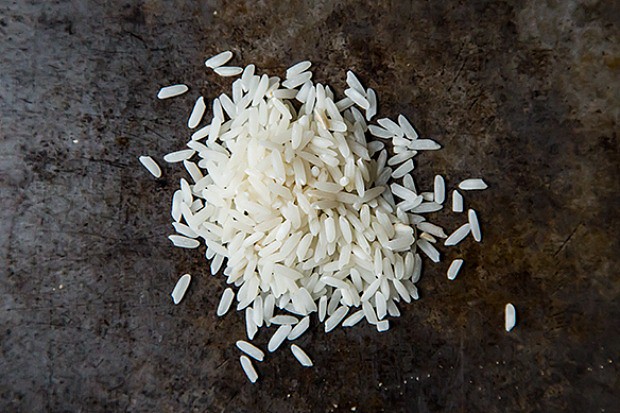Vinegar. Vinegar’s place on this list will come as a surprise to no one; it can help you clean in almost every room of your house. (Don't worry, the smell dissipates.) Vinegar is acetic, which helps cut through dirt while killing mold, bacteria, and viruses. You might already know that a solution with equal parts white (also called distilled) vinegar and water can help you clean kitchen and bathroom surfaces -- just remember to keep it away from marble and other porous stone surfaces -- but it can do so much more.
Don’t want your dinner guests to know you spent $4 on that bottle of wine? Remove the price tag (and other papery stickers) by sponging on vinegar, letting it sit for a few minutes and then scraping off the sticker. And stop averting your eyes from the crumb-catching crack between your oven and counter. Grab a thin, blunt instrument (like a butter knife), wrap it once in a vinegar-soaked cloth, and slowly drag the knife toward you in the crack.
Baking soda. Vinegar’s partner in crime, baking soda cuts odors and can be used as a gently abrasive cleaner. The combination of the vinegar and baking soda can help keep drains clear and de-skunk dogs (Really. We tested this one twice just to be thorough.). Give your oven a good cleaning by wetting down the inside surfaces with water with a sponge or a spray bottle, and then sprinkle baking soda all over -- or make a thick paste of the two and cover the surfaces. Let the baking soda do its work for a few hours (or overnight) and then wipe clean. Remove marks (like a crayon masterpiece) from painted walls with baking soda on a damp sponge. Water and baking soda can also be used to remove stains on fabric, or to gently clean surfaces.

Salt. Salt can be used to spot-clean a stained wooden cutting board; make a thick paste with salt, water, and baking soda, and scrub away your stains. When a dish boils over in the oven, cover the spill with salt while it’s still wet, it will make it easier to clean up later -- after the oven cools down of course. Don’t worry if your guests ignored the stack of coasters you set out; make a thin paste of salt and vegetable oil and rub it on the white rings their beverages left on your wooden tables. Salt can also help you clean your cast iron pans by gently scrubbing away stubborn bits of food from without removing your seasoning.
Lemon. Lemon’s mildly acidic nature will help you you make quick work of grease and grime, with an all-natural fresh scent to boot. Just add water to lemon juice to remove grease on your stove and appliances. Lemon juice can clean up brass -- just double-check that the item is brass, and not brass-plated! Amanda gets serious about washing dishes -- take it to the next level and add a little lemon juice to your dish soap when you’re filling the sink with hot, soapy water. Combining lemon juice with with kosher salt and mineral oil can help you deep-clean a wooden cutting board, and after you’re done cooking (or cleaning) with a lemon, don’t forget to put it through your garbage disposal to get rid of any lingering odors.

Rice. Uncooked white rice can help you clean out vases or thin-necked bottles. Partially fill them with warm water and a handful of rice and shake vigorously -- cover the top of the vase with your hand please. If your vase has a stubborn white film in it, fill the vase with white vinegar (enough to cover the residue), let it sit for a bit, and then add the rice and shake. Add a handful of uncooked rice to your blade coffee grinder and whizz it up to remove oily residue. (Don’t use this method on a burr grinder, and you do this often, stick with uncooked instant rice.)
Club soda. It isn’t just for your favorite 3-ingredient drink -- it’s also great for when you spill it. Club soda works to remove stains from fabrics and carpets if you act quickly. Pour or dab it on liberally, then blot and gently rub the spot away. Streaks on stainless steel will disappear after being buffed with a club soda-soaked cloth, and porcelain sinks and fixtures can be cleaned with club soda too. Give the inside of your refrigerator a good wipe down with a mixture of salt and soda water and then re-organize it.
(Source: food52)
'recent discovery' 카테고리의 다른 글
| 부엌에서 유용한 몇가지 팁 (0) | 2014.04.29 |
|---|---|
| 나이 든 아빠의 장점들! (원제: Risks for older dads, but oh the rewards) (0) | 2014.03.08 |
| 코코넛 오일의 용도 (0) | 2012.02.01 |
| 지구온난화의 긍정적인 효과?!?! (4) | 2012.01.29 |
| Stocking up. 부엌에 항상 둬야 할 몇가지 재료들 정리. (4) | 2012.01.27 |


